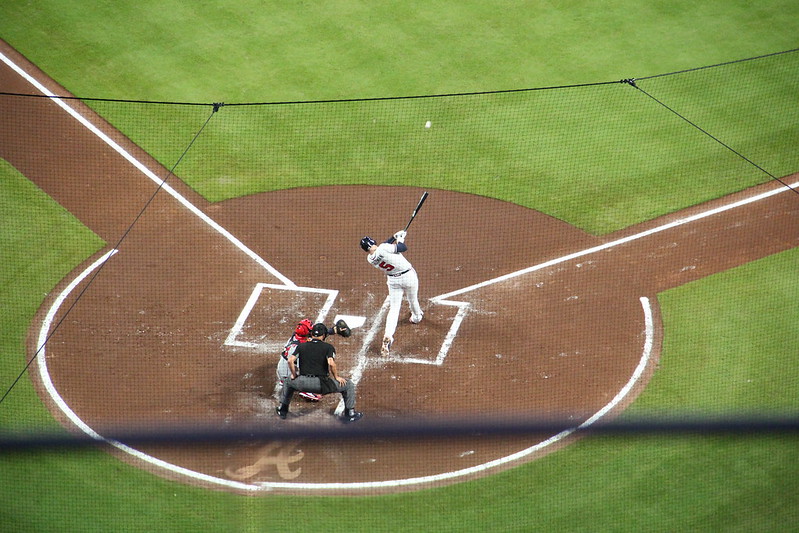Below is an analysis of the prospects in the farm system of the Atlanta Braves. Scouting reports are compiled with information provided by industry sources as well as from our own (both Eric Longenhagen’s and Kiley McDaniel’s) observations. For more information on the 20-80 scouting scale by which all of our prospect content is governed you can click here. For further explanation of the merits and drawbacks of Future Value, read this.
All of the numbered prospects here also appear on The Board, a new feature at the site that offers sortable scouting information for every organization. That can be found here.
Other Prospects of Note
Grouped by type and listed in order of preference within each category.
Power as a Carrying Tool
Kadon Morton, CF
Mahki Backstrom, 1B
Jefrey Ramos, LF
Greg Cullen, 2B
Brendan Venter, 3B
Drew Lugbauer, C/3B/1B
Morton, a two-way high schooler with a great frame and easy plus speed, and Backstrom were two of Atlanta’s Day Three, overslot high schoolers. Backstrom has more power right now, but Morton is toolsier and has the higher ceiling. The rest are big power corner guys of varying ages. Ramos is only 20 but seems poised to be a low OBP hitter. Cullen has pretty strong exit velo data but was old for the level. Venter and Lugbauer are really only first base fits, and it’s a tough profile.
Bench Sorts
Beau Phillip, SS
Andrew Moritz, CF
AJ Graffanino, SS
Justin Dean, CF
Phillip was a second rounder who took a $500,000 haircut. He has utility bench tools. Moritz is a tweener outfielder with good instincts. Scouts really liked Graffanino at times in high school and in college, but he’s been hurt at times and not performed at others. Dean is a 70 runner.
Younger Arms
Darius Vines, RHP
Roddery Munoz, RHP
Jared Johnson, RHP
Kasey Kalich, RHP
Alec Barger, RHP
Lisandro Santos, RHP
Justin Yeager, RHP
There’s a relative lack of arm strength toward the bottom of this system. Vines is TrackMan0friendly reliever with an average heater/breaker combo and a 55 changeup. Munoz is a two-year DSL pitcher up to 97. Johnson was a 2019 overslot high schooler on Day Three. He was up to 92 in pro ball, and is a bigger kid with a stiffer delivery that popped up late in the spring. Kalich spent a year at a JUCO, then was a draft-eligible sophomore at Texas A&M, so he may be an under-scouted, sleeper relief prospect with a mid-90s heater. The last three are all 21-year-olds who were up to 96 at Danville.
Older Arms
Corbin Clouse, LHP
Thomas Burrows, LHP
Daysbel Hernandez, RHP
Josh Graham, RHP
Luis Mora, RHP
Kurt Hoekstra, RHP
Troy Bacon, RHP
Brad Roney, RHP
Clouse and Burrows are both close to the big leagues and profile as the second lefty in a bullpen. Hernandez has mid-90s heat and could be a middle relief piece if his breaking ball becomes more consistent. Graham throws hard but his fastball doesn’t miss bats, and it affects the way his excellent changeup plays. Mora has the highest ceiling of this group, and he’s been up to 101, but he’s very wild. Hoekstra is a conversion arm up to 95 with an average slurve. Bacon isn’t big, doesn’t have huge velo, and operates with small margin for error at the top of the zone, but is getting results. Roney was a conversion arm at Southern Miss that quickly showed upper-90’s velo in pro ball, but command and health have been problems.
System Overview
The tide has receded in this system, and it’s currently shallow due to trades and graduations, and because of the fallout from the previous regime’s scandal, which has kept it from acquiring two years of international talent. Still as top-heavy a system as you’ll find in baseball, Atlanta has several promising, everyday type players at the very top of the farm but very little depth right now.
But wait, let’s talk about their 2019 draft class. Initially, we did not like it. We were lukewarm on Shewmake, and thought Beau Phillip was a reach. But the team took a high-volume approach with a bunch of overslot picks on Day Three, which was a logical approach considering that the International program’s hands were tied, and the class looks pretty interesting now. There’s industry love for Shewmake among clubs that think he’s still growing into his body, Harris and Ball had summers so strong that their stock rose. Suddenly there are some interesting, toolsy types percolating near the bottom of the system.


